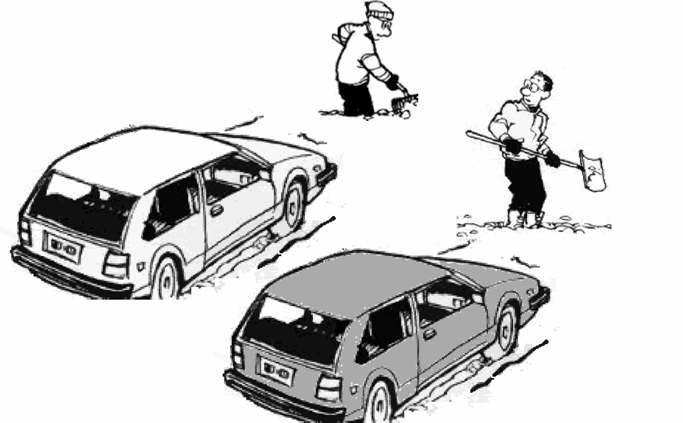SNOWDRIFT
From 2009.igem.org
| Line 28: | Line 28: | ||
! | ! | ||
! style="background:#ffdead;" |Co-operate | ! style="background:#ffdead;" |Co-operate | ||
| - | ! style="background:# | + | ! style="background:#ABCDEF" |Defect |
|- | |- | ||
| style="background:#ffdead;" |'''Co-operate''' | | style="background:#ffdead;" |'''Co-operate''' | ||
| Line 34: | Line 34: | ||
| b-c, b | | b-c, b | ||
|- | |- | ||
| - | | style="background:# | + | | style="background:#ABCDEF |'''Defect''' |
| b, b-c | | b, b-c | ||
| 0, 0 | | 0, 0 | ||
Revision as of 05:53, 10 July 2009
| Home | The Team | The Project | Parts Submitted to the Registry | Modeling | Notebook |
|---|
The Snowdrift game:
Picture this. You are running late for a movie, a date or for the sake of assumption a scientific talk. But as luck would have it, your car gets stuck on the road because of a snowdrift. You see another bloke in a similar situation and also most likely in a hurry. So what do you do now? You could get out of the car and start shoveling so that you can reach wherever you want to go in time. But let's face it, you are a lazy bum. You would rather the other bloke get out of his car and start shoveling, while you sit in the car watching him sweat and later once the road is clear, leave him with a classic goodbye. But, as luck would have it, the other bloke is just like you. So both of you keep staring at each other till one of you finally gets fed up and starts shoveling. But both of you are already late anyway. This is what is called the snowdrift game.
More formally, a game theoretic analysis of this situation would probably run something like this. If both 'players' in this game decide to 'co-operate' they each get the 'benefit' (of reaching in time), while paying the 'cost' (time and effort in shoveling. If one of the players remains in the car i.e. he 'defects', while the other shovels (co-operates), the defector gets solely the benefit without paying the cost, while the co-operator gets the benefit but pays double the cost (as he has to do all the work alone). If both defect, both get nothing.
This can be represented in a tabular form as follows:
| Co-operate | Defect | |
|---|---|---|
| Co-operate | b-c/2, b-c/2 | b-c, b |
| Defect | b, b-c | 0, 0 |
The 'payoffs' are organised as follows. The payoff of the row player is written first, so when the row-player co-operates and the column-player defects, the row-player gets a payoff of 'b-c', while the column-player gets 'b'.
 "
"
